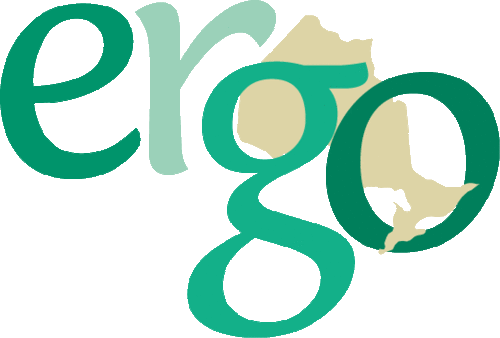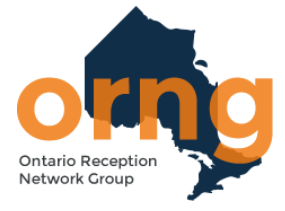
We collect basic website visitor information on this website and store it in cookies. We also utilize Google Analytics to track page view information to assist us in improving our website.
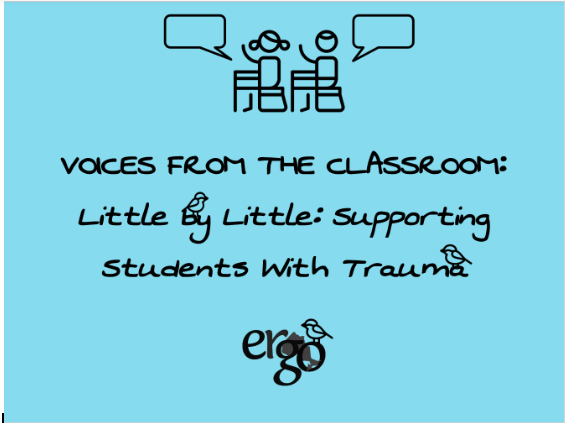
By Paulina Kurevija, WRDSB
I took my class on a field trip to a nature reserve. After we explored the forest and had ourselves a good ol’ fashioned halal marshmallow roast, this is what the guide said to us. I am an eternal optimist and believe anything is possible, but nevertheless doubt crept up in my mind. I have spent 5 days a week with my loveable group of students and NEVER have I heard complete silence or seen everyone completely still. The best thing in life is to approach it with a sense of humour, so with a smile on my face and the hope my kids would get to see chickadees I said, “let’s do it!”.
As we formed a line on the wooden bridge above a frozen marsh my students stood with excitement on their faces; this is the moment they have been talking about for weeks. I stood at the end of the line looking at each of my students trying their hardest to stand “as still as a statue”. Then… I see one of my students start to wiggle and fidget as is her nature, and then, more and more students start to wiggle and fidget. After about 30 seconds a student of mine says very loudly, “No birds are coming!” and I gently say “Shhh they won’t come if they hear us talking”, to which he responds, “Why do you always get ME in trouble?!”. Immediately another student in my class yells down the line, “STOP TALKING!” and just like that, the chaos.
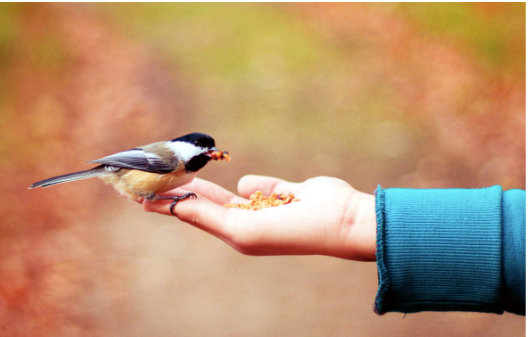
These memories are so fond in my mind. I never ask for the chaos and wacky craziness to stop, we just slowly day by day learn to build a little more peace. My students have come from Syria and Afghanistan, most of their families coming to Canada as refugees. Some of my students have seen violence, others were directly involved with the violence. Many have never been to school, or were treated as second class citizens in the countries they moved to temporarily before coming to Canada. If you hear stories about Syrian kids being separated from the local kids, being hit with books and spending the afternoons cleaning the school instead of learning, I have students that lived that reality. If you heard that in many countries girls do not have a chance to go to school, or are kicked out as soon as there are too many kids for the number of teachers, I have students that lived that reality. When you watch tv and see kids sitting on plastic boxes in plastic tents with dirt below their feet and no books or pencils, I have students that lived that reality. Many of my amazing, resilient students grew up in a world of chaos, and when you are surrounded by chaos eventually the chaos seeps in.
As a child, the outside environment can very quickly change your internal environment. You cannot ask a child who feels chaos on the inside not to create chaos on the outside. I do not ask this of them, instead I do everything I can to create peace on the outside and slowly day by day I see peace begin to grow in my students.
My students have big, giant hearts full of love. The thing with hearts is while they can carry a lot of love, they can also carry a lot of pain. This was said to me by one of my students after a particularly disruptive day. He sang, he made funny noises, he rocked himself, he stood up and walked around, if it was disruptive, he did it. When I see one of my students doing things like this my first thought is always, “What are they feeling in their hearts that is making them do this?”. I gave gentle reminders and continued teaching. As soon as I could transition to another activity I did and then I went to talk to my student. He quickly told me that he has to make noise and move because then he doesn’t have to think about all the things that make him sad. He said he thinks about his home, playing in the front yard and training the wild dogs. He thinks about his cousin who died recently in Afghanistan, his cousin who used to dream with him about the expensive cars and big houses they would both buy when they grew up. He thinks about the things he sees on the news or overhears his parents saying in the next room about war and violence. No one could be upset at a 9 year old kid for being disruptive when he carries that much chaos and that much pain around with him everywhere he goes.
But little by little I see the peace in him grow. I keep seeing more smiles and less furrowed brows. I see more interest in reading and math, and less unfocused attention. I see more relationships and bonds being made with the other kids and less fighting at recess. I see more peace and I see less pain. Little by little.
Hell yah! Of course I can’t use that language with my students, but I constantly remind them that they can achieve anything. Being born in a situation where they had to overcome more challenges is going to serve them well in the future. They know how to fight for themselves, they know how to persevere when things get tough, they know how to pick themselves up and try again and again until it works. I’ve told them many times, “You might have to work twice as hard as someone else, but it will make you so resilient that you’ll be unstoppable. Any goal and any dream you have will happen, and YOU will make it happen.” There is no doubt that being denied the opportunity to go to school until grade 6 lit a fire for the student who said she wants to become a doctor. She has told me many times that she never got to go to school, and now that she gets to go to school, she’s not going to waste it. Everyday she comes to my class ready to do her best. That doesn’t mean she’s always perfect or always listening, she’s fighting the chaos inside the best she can and she is succeeding in school better than my wildest dreams. You don’t give up, you just keep fighting. Little by little you see your goals become successes. That is what my students have taught me.
Dance every day. Listen to music every day. These are lessons my mom has taught me and something that makes my students very happy. Some of them love to dance and all of them love to listen to music. I’ve learned a few Arabic dance moves and it’s incredible to see how music can bring a sense of calm and happiness in my students. Trauma lives in the body and can cause many symptoms such as stomach aches, muscle tension, headaches etc. Music and movement helps the body process trauma and slowly begin to let it go. Music and dancing. Every day. Little by little the body heals.
The work I do is sometimes difficult. Many of my students are frequently caught in storms, where their emotions and past traumas come back up and throw them off balance. There are a lot of waves and a lot of storms, but little by little we are supporting each other to make the waters peaceful. Little by little the pain and the trauma becomes less intense and their hearts can start to feel the love. Little by little they get to be kids. The work I do is sometimes difficult, but it always fills my heart with so much love and I wouldn’t trade it for anything.
A few times in my life I’ve been asked the question, “What does Canada and being Canadian mean to you?”. These kids and this work that I do is what Canada and being Canadian means to me. We’ve all come from different parts of the world, lived different experiences and little by little we become a family. That is what Canada is to me, a family that has come together by choice. We’re proudly Syrian, Afghan, Croatian and Canadian and little by little we become a family, part of the big Canadian family that reaches sea to sea to sea. That’s my Canada.
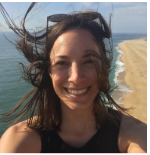
Paulina is a teacher who loves her job. She is passionate about teaching through Trauma-Informed Pedagogy and helping to create Trauma-Informed Schools. In the classroom her goal is to make every student feel welcomed and appreciated in Canada. When she is not teaching, you can find Paulina biking, hiking and woodworking with her family.
|

By Naomi Lawerence, YRDSB
The York Region District School Board (YRDSB) is situated just north of Toronto. We are the third largest school district in Ontario, with over 124,000 students in 180 elementary schools and 33 secondary schools. Students and families in YRDSB speak 119 different languages. Currently, we have a total of 34,775 students who are acquiring English as an additional language in our Elementary and Secondary schools.
Over the years, our school board has put many intentional programs and services in place to support multi-language learners and their families. Recognizing that change is complex and requires a system-level approach, our board has developed strategies aligned with system priorities and goals that address the needs of our most marginalized and underserved students.
These priorities and goals are outlined in our Trustees’ Multi-Year Strategic Plan and the Director’s Action Plan (DAP). A shared vision of English language learners as more than “learners of English”, but as capable and competent individuals with many strengths, lived experiences, and intersecting social identities, is at the centre of our educational efforts. The development of the ESL/ELD Steering Committee was timely, in that it supports specific DAP goals related to Equity and Inclusivity by encouraging all stakeholders to:
Last school year, in support of system-level data collection, we established the first ESL/ELD Steering Committee in YRDSB in order to better understand the experiences of students and staff.
The goal of the ESL/ELD Steering Committee is to provide a formalized, system-level opportunity for multiple voices and stakeholders to notice, name, and interrupt barriers to students’ success and well-being as they continue to acquire English as an additional language.
Through an anti-oppressive lens, the committee has collaborated to provide system direction to support inclusive and equitable learning opportunities for multi-language learners, Kindergarten to Grade 12. This is an established committee, with rotating membership every two years. The current group has met four times over seven months, and their feedback and collective efficacy have supported the launch of a larger board ESL/ELD System Review, supported by our Research Services department.
Who might you invite to participate in a steering committee?
Recognizing the diversity of our geographically large school board, it was critical for us to seek membership from a variety of school communities and stakeholders. As such, the following groups are represented on the YRDSB ESL/ELD Steering Committee:
School Principals and Educators: Eight school teams (4 Elementary and 4 Secondary), made up of administrators and educators across our 4 geographic areas. ESL/ELD teachers in these schools are part of the school leadership team.
Superintendents: A minimum of one area Superintendent of Schools and/or the Superintendent of Curriculum & Instructional Services.
Federation Partners: A member of the Elementary Teacher Federation of Ontario and a member of the Ontario Secondary School Teacher Federation.
Regional Staff: Consultants/principals from the ELL team, Inclusive Schools and Community Services, Math, Guidance, Research and Assessment Services, First Nation Metis Inuit team, Reception Centre, School Settlement Services, Special Education, as well as International Education.
The group developed Terms of Reference that outline membership roles, timelines, as well as goals of the committee. Some of our committee goals include:
To address this, we developed a structure to elicit feedback and solution-focused recommendations. For a portion of every meeting, we divide the committee into smaller groups. Depending on the topic for discussion, sometimes these groupings were “like roles” (e.g., all administrators together, ELL teachers together, etc.), other times they were heterogeneous groupings.
Outlined below is a structure that helped us notice what was working in our board, identify barriers, and make recommendations to address these barriers in the form of policy, procedures, practices at the classroom level, school level and system level.
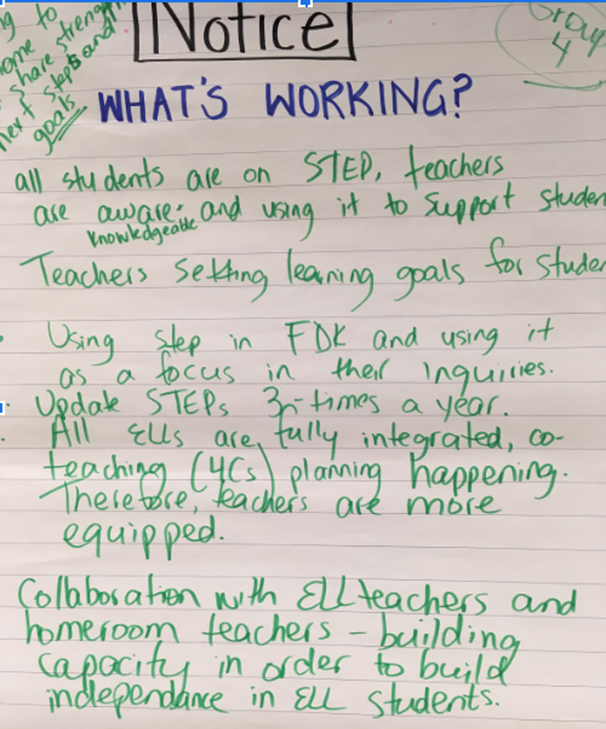
We recognize that this is complex work and it’s critical to take a system-level approach. Many of the recommendations gathered from our ESL/ELD Steering Committee thus far have been shared with our Board’s Senior Team, Executive Council, and Staffing Committees who require this information to support the development of ESL/ELD programs and policies.
If your board is hoping to re-envision practices related to the academic success and well-being of English language learners and their families in your school board, you may find that establishing an ESL/ELD Steering Committee is a great place to start.
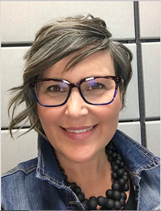 Naomi Lawrence has been an ERGO member for several years and greatly appreciates the collective voice and efficacy of this provincial association. She is also grateful for the opportunity to be a part of the ELL team at the York Region District School Board. Feel free to connect with Naomi at [email protected]
Naomi Lawrence has been an ERGO member for several years and greatly appreciates the collective voice and efficacy of this provincial association. She is also grateful for the opportunity to be a part of the ELL team at the York Region District School Board. Feel free to connect with Naomi at [email protected]
